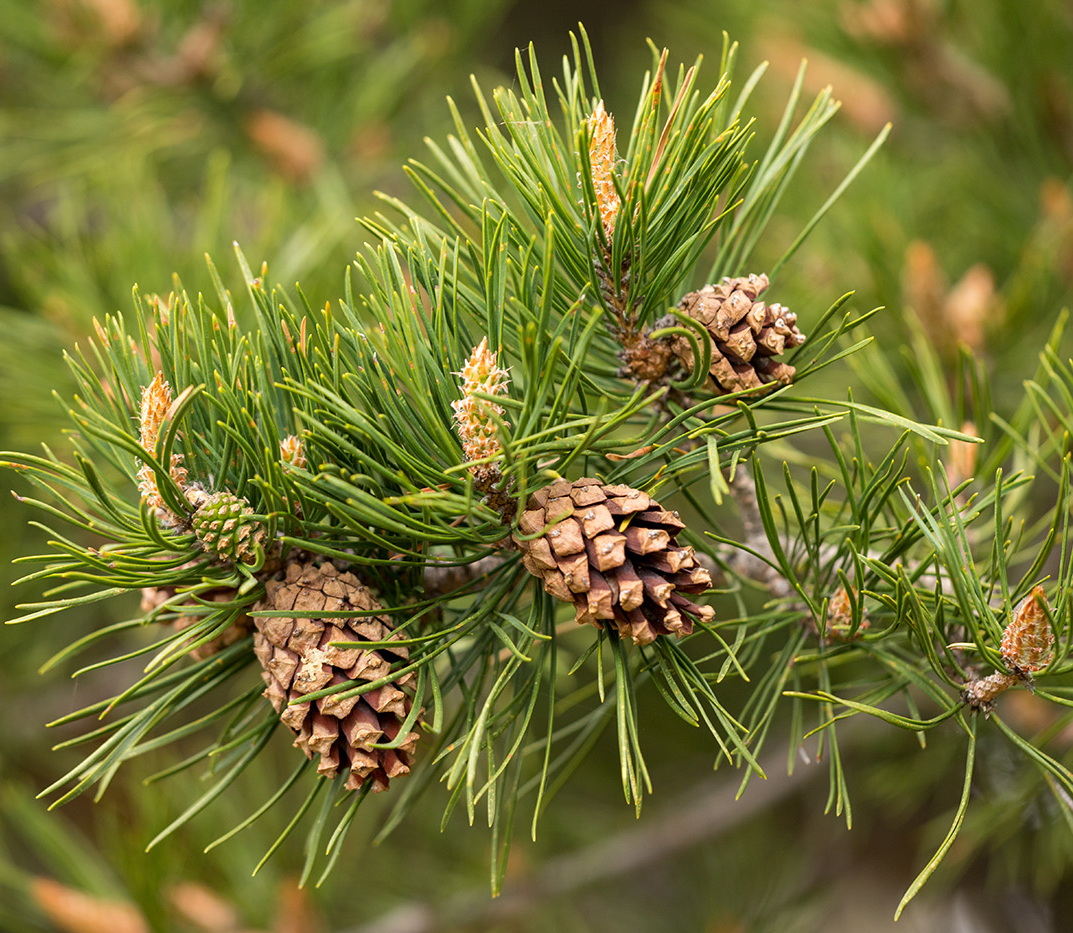THE STIMULATING PROPERTIES OF SPRUCE WOOD GREENERY EXTRACT OBTAINED IN ACCORDANCE WITH THE PRINCIPLES OF "GREEN TECHNOLOGY"
UDC 54.062+ 582.47+543.64+ 630*232.32+66.061
Abstract
The article is devoted to the study of the composition and biological activity of an extract obtained from spruce wood greenery using an environmentally safe "green technology" method of extraction with an aqueous-alkaline solution. The content of neutral compounds (sesquiterpenoids, diterpenoids, polyprenols, and sitosterols) and acidic components (fatty and phenolic acids) in the extract was determined.
The biological activity of spruce extract as a growth stimulant when growing planting material of Pinus sylvestris seedlings in forest nurseries of the Ural region was assessed. Soaking pine seeds in an aqueous solution of the spruce extract is performed for 6 hours at room temperature. The stimulating effect of the extract is shown when growing pine seedlings in forest nurseries, with different granulometric and agrochemical compositions of the soil. An increase in the growth parameters and phytomass of seedlings was established when growing on medium-loamy soil and light loam.
The use of a biostimulant made of wood greenery for growing seedlings will reduce the chemical load on the arable soil of forest agrocenosis and will significantly contribute to the development and application of "green" technologies in forestry.
Downloads
Metrics
References
Tanase C., Talmaciu A.I., Bara I.C., Boz I., Volf I. et al. BioResources, 2018, vol. 13(2), pp. 3994–4007. DOI: 10.15376/biores.13.2.3994-4007.
Egorova A.V., Chernobrovkina N.P., Robonen E.V. Khimiya rastitel'nogo syr'ya, 2017, no. 2, pp. 171–180. (in Russ.).
Popko M., Michalak I., Wilk R., Gramza M., Chojnacka K. et al. Molecules, 2018, vol. 23, pp. 470–482. DOI: 10.3390/molecules23020470.
Ryabchinskaya T.A., Zimina T.V. Agrokhimiya, 2017, no. 12, pp. 62–92. (in Russ.).
Arioli T., Mattner S.W., Winberg P.C. Journal of Applied Phycology, 2015, vol. 27(5), pp. 2007–2015. DOI: 10.1007/s10811-015-0574-9.
Canellas L.P., Olivares F.L., Aguiar N.O., Jones D.L., Nebbioso A. et al. Scientia Horticulturae, 2015, vol. 196, pp. 15–27. DOI: 10.1016/j.scienta.2015.09.013.
Calvo P., Nelson L., Kloepper J.W. Plant and Soil, 2014, vol. 383, pp. 3–41. DOI: 10.1007/s11104-014-2131-8.
Shekhar Sharma H.S., Fleming C., Selby C., Rao J.R., Martin T. Journal of Applied Phycology, 2014, vol. 26(1), pp. 465–490. DOI: 10.1007/s10811-013-0101-9.
Metsämuuronen S., Siren H. Journal of Bioprocessing and Biotechniques, 2014, vol. 4, 167. DOI: 10.4172/2155-9821.1000167.
Kamaityte-Bukelskiene L., Loziene K., Labokas J. Molecules, 2021, vol. 26, 2138. DOI: 10.3390/molecules26082138.
Lamotkin S.A., Akhramovich T.I., Sakovich A.V., Budkovskaya D.A. Trudy BGTU. Ser. 2, Khimicheskiye tekhnolo-gii, biotekhnologii, geoekologiya, 2021, no. 2(247), pp. 94–99. (in Russ.).
Metsamuuronen S., Siren H. Phytochemistry Reviews, 2019, vol. 18, pp. 623–664. DOI: 10.1007/s11101-019-09630-2.
Azmir J., Zaidul I.S.M., Rahman M.M., Sharif K.M., Mohamed A. et al. Journal of Food Engineering, 2013, vol. 117, pp. 426–436. DOI: 10.1016/ j.jfoodeng.2013.01.014.
Co M., Fagerlund A., Engman L., Sunnerheim K., Sjöberg Per J.R. et al. Phytochemical Analysis, 2012, vol. 23, pp. 1–11. DOI: 10.1002/pca.1316.
Nastic N., Gavaric A., Vladic J., Vidovic S. Journal of Agronomy, Technology and Engineering Management, 2020, vol. 3(3), pp. 437–447.
Conde E., Díaz-Reinoso B., Moure A., Hemming J., Willför S.M. et al. III Iberoamerican Conference on Supercritical Fluids. Cartagena de Indias, Colombia, 2013.
Rombaut N., Tixier A.-S., Bily A., Chemat F. Biofuels, Bioproducts and Biorefining, 2014, vol. 8, pp. 530–544. DOI: 10.1002/bbb.1486.
Talmaciu A.I., Ravber M., Volf I., Knez Z., Popa V.I. The Journal of Supercritical Fluids, 2016, vol. 117, pp. 243–251. DOI: 10.1016/j.supflu.2016.07.001.
Nikonova N.N., Hurshkainen T.V., Kuchin A.V., Shevchenko O.G. Holzforschung, 2022, vol. 76(3), pp. 276–284. DOI: 10.1515/hf-2021-0122.
Sprankle P., Meggit W., Penner D. Weed Science, 1975, vol. 23, pp. 229–234. DOI: 10.1017/S0043174500052929.
Freiberg I.A., Stetsenko S.K. Lesovedenie, 2017, no. 1, pp. 39–44. (in Russ.).
Kopaczyk J.M., Warguła J., Jelonek T. Environmental and Experimental Botany, 2020, vol. 180. 104197. DOI: 10.1016/j.envexpbot.2020.104197.
Vanaga I., Gubernator J., Nakurte I., Kletnieks U., Muceniece R. et al. Molecules, 2020, vol. 25, 1801. DOI: 10.3390/molecules25081801.
Aparicio V.C., Gerónimo E., Marino D., Primost J., Carriquiriborde P. et al. Chemosphere, 2013, vol. 93(9), pp. 1866–1873. DOI: 10.1016/j.chemosphere. 2013.06.041.

Copyright (c) 2024 chemistry of plant raw material

This work is licensed under a Creative Commons Attribution 4.0 International License.

This work is licensed under a Creative Commons Attribution 4.0 International License.
The authors, which are published in this journal, agree to the following conditions:
1. Authors retain the copyright to the work and transfer to the journal the right of the first publication along with the work, at the same time licensing it under the terms of the Creative Commons Attribution License, which allows others to distribute this work with the obligatory indication of the authorship of this work and a link to the original publication in this journal .
2. The authors retain the right to enter into separate, additional contractual agreements for the non-exclusive distribution of the version of the work published by this journal (for example, to place it in the university depository or to publish it in a book), with reference to the original publication in this journal.
3. Authors are allowed to post their work on the Internet (for example, in a university repository or on their personal website) before and during the review process of this journal, as this may lead to a productive discussion, as well as more links to this published work.











